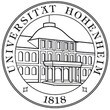News
Multivitamin supplements may reduce cancer risk
18 October 2012
According to a new US study, a daily intake of a combination of low-dose vitamins and minerals can decrease total cancer incidence by 8%.
29 January 2013
 University of Hohenheim, Institute of Biological Chemistry and Nutrition, Stuttgart, Germany
University of Hohenheim, Institute of Biological Chemistry and Nutrition, Stuttgart, Germany
“Whenever Nobel Prize winners have something to say, regardless of the subject matter, it generates media attention. So, too, did the recent publication by James Watson, arguably the most famous recipient of the Nobel Prize in Medicine for his discovery of the structure of DNA. In an article entitled ‘Oxidants, antioxidants and the current incurability of metastatic cancer’ (1), Watson compiles data that outline three main statements:
1. Most cancer therapies are based on generating reactive oxygen species (ROS) that lead to cell death (apoptosis) of tumor cells.
2. The administration of antioxidant micronutrients (vitamins E and C, beta-carotene and selenium), which
is thought to protect cells from oxidative damage, can be counterproductive and promote metastasis by blocking the apoptosis of cancer cells.
3. An inhibition of the tumor cells’ antioxidant defenses can subsequently lead to improved results of the therapy.
The initial hypothesis that many therapies operate by generating ROS is not new: it applies, essentially, to radiotherapy (ionizing radiation, photodynamic therapy), as well as to heat treatments like hyperthermia
(2–4), and it proves to be especially applicable when various ROS-generating therapies are combined (4). Watson does not cite any scientific evidence to back his second statement, even though it could be shown that vitamin C in vitro (i.e. in isolated cells in a laboratory experiment) blocks the cell death triggered by the therapy-induced formation of ROS (5). However, this can only be achieved with a very high dosage of vitamin C and has not been proven under in vivo conditions (i.e. in a living organism). Remarkably, the intravenous administration of high-dose vitamin C produces a special reaction: ROS are generated in the form of hydrogen peroxide and they have an equally fatal effect, in particular on cancer cells (6). These interesting, animal experiment-based results with vitamin C via ROS generation open up new treatment fields (7). And this is closely related to Watson’s third working hypothesis: That the inhibition of cellular antioxidant defenses increases the formation of ROS and thereby improves the therapy’s results. But this is not precisely a new idea, either: According to one seminal article, the inhibition of superoxide dismutase – an enzyme with an antioxidant role in protecting cells – by 2-methoxyestradiol (2-ME2), is thought to induce leukemia cells to undergo apoptosis due to an increased ROS formation (8). This effect of 2-ME2 could not, in fact, be proven (9). However, the effect appears to be cell-specific and not always based on the generation of ROS (10). In the same vein as Watson, it has also been discussed whether 2-ME2, along with another active ingredient, could be a possible therapy for breast and prostate cancer (11).
How can we account for Watson’s statement that antioxidants may promote tumor growth, whereby not only the treatment itself is called into question, but also whether they contribute to the formation of cancer cells? Watson cites many examples of the ROS’ potential significance for successful therapy results and that cells with an inhibited antioxidant system react more sensitively to ROS-generating therapies. Unfortunately, he does not cite any studies demonstrating that antioxidants had actually blocked the therapy. Rather, Watson derives his thesis – that antioxidants should be avoided to prevent the promotion of metastases – from a meta-analysis that did not explicitly address this issue. Furthermore, Watson clearly oversees that the interventional studies he cites (ARET, ATBC, SELECT) worked with high-dose antioxidants – i.e. doses far higher than the recommended intake. However, the necessity of avoiding high-dose antioxidants during tumor therapy has been long established. There is no reason to warn people against consuming a normal dose of vitamin supplements or fortified foods in light of the common malnourishment of oncological patients.”
Based on: Hohenheimer Ernährungsinformation. Können Vitaminpräparate Krebspatienten schaden? Published online January 2013.
18 October 2012
According to a new US study, a daily intake of a combination of low-dose vitamins and minerals can decrease total cancer incidence by 8%.
30 March 2016
The National Health and Nutrition Examination Survey (NHANES) is a program of studies designed to assess the health and nutritional status of adults and children in the United States, and to track changes over time. Findings from the survey are used to determine the prevalence of major diseases and risk factors for diseases. Information is used to assess nutritional status and its association with health promotion and disease prevention.
5 June 2012
Depending on their genes, people with cardiovascular disease could significantly lower their blood pressure and, in turn, their risk of heart disease and stroke by increasing their intake of vitamin B2, suggests a study from Northern Ireland.